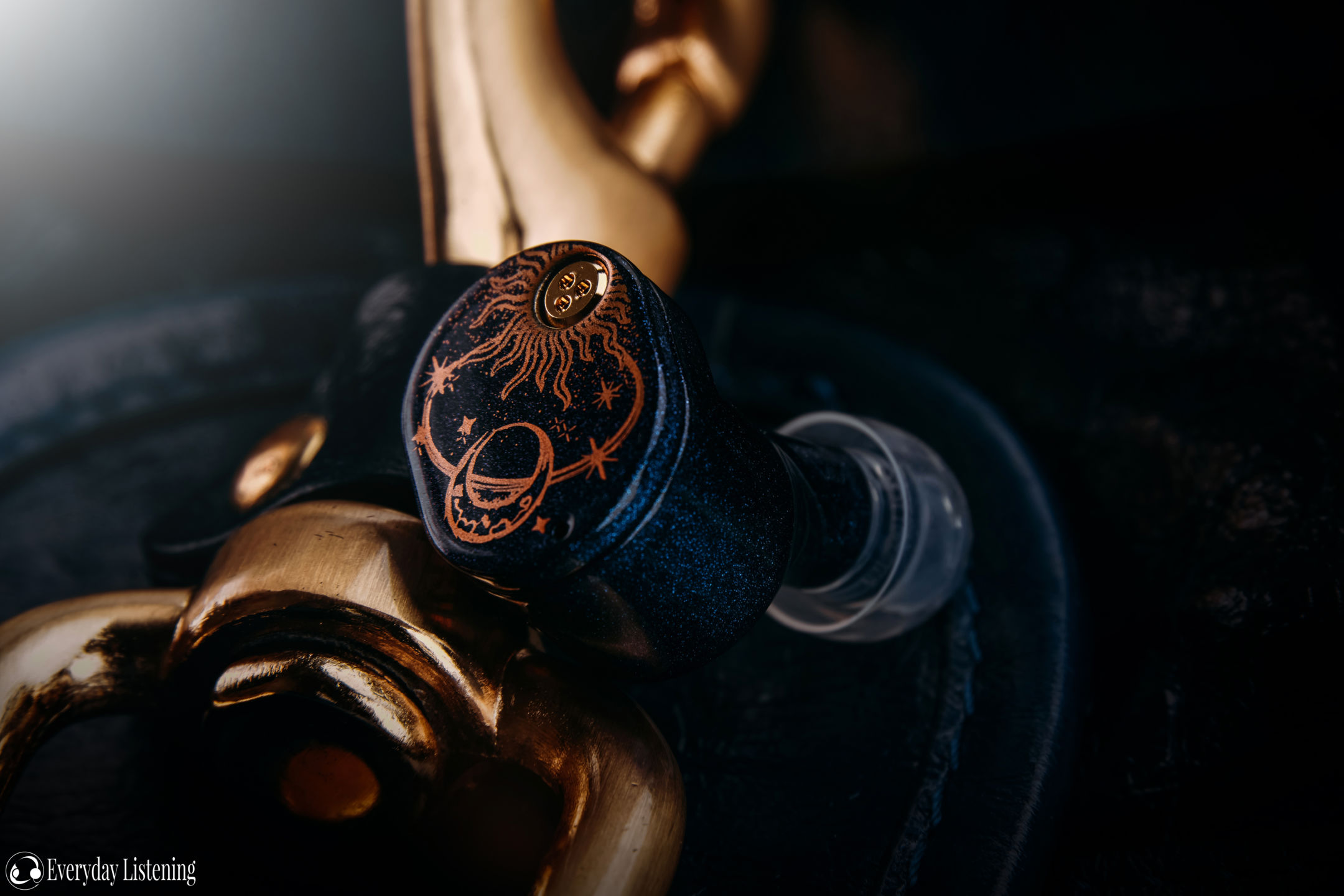Pros –
Good ear tip selection, Attractive hand-painted design, Highly resolving bass performance, Great separation, Energetic treble
Cons –
Thin note body throughout, Metallic midrange timbre hurts versatility, Bulky shells
Verdict –
While the Stellaris’ efficiency and sound ergonomics seem to appeal to broad consumers, its polarising tuning means it inevitably comes across as more of a proof of concept rather than a versatile daily driver.
Introduction –
Moondrop have achieved renown not only for their well-priced models but also their consistent quality regardless of asking price. This is due to their creation and continued adoption of the VDSF target response that was initially inspired by the Harman curve but has slowly evolved over time into Moondrop’s own creation. Accordingly, their in-ears provide a consistent sound profile, one that is usually balanced and natural sounding if slightly different from model to model. The same tuning curve has been applied to many models from their entry-level wireless dynamic ones to their high-end hybrids. The Stellaris is the latest addition that employs the same methodology atop a capable and ever more popular planar-magnetic driver platform. Planar in-ears are becoming ever more popular as they deliver immense technical performance, albeit, with many struggling with wonky tonalities. The Stellaris then seems like a great solution, offering the same benefits yet with the company’s famous target curve tuning. Moreover, the Stellaris is economically positioned, at the same asking price as the dynamic-driver-based Starfield (2).
The Stellaris is available for $109 USD. You can read all about it and treat yourself to a unit on Apos Audio.
Disclaimer –
I would like to thank John very much for reaching out to organise a review of the Stellaris. All words are my own and there is no monetary incentive for a positive review.
Contents –
- Page 1: Intro, Unboxing & Design
- Page 2: Sound Breakdown
- Page 3: Comparisons & Verdict
Specifications –
- Driver: 14.5mm Planar Magnetic
- Frequency Response: 10 Hz – 50 kHz
- Impedance: 36 Ohms
- Sensitivity: 117 dB
Behind the Design –
Planar Driver

I believe most are familiar with the mechanics of planar drivers these days. They offer inherent advantages over dynamic drivers due to a more uniform motor design and often, a larger diaphragm too. The Stellaris uses a 14.5mm driver with a high precision fully symmetrical array of magnetic circuits, 7 per side of the diaphragm, sporting N52H neodymium magnets. This allows the driver to produce 1 Tesla of magnetic flux up there with the best dynamic driver IEMs. The diaphragm itself is just 1um in thickness with a 2um etching circuit offering a fast transient response and low distortion.
Iridescent Shells
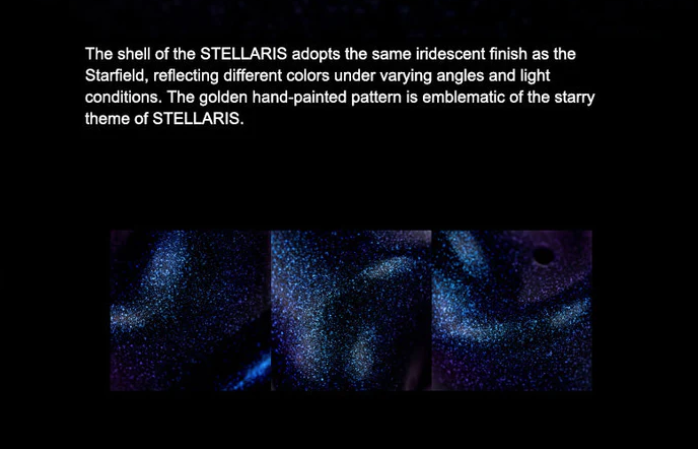
Like the Starfield, the Stellaris has a painted iridescent metal shell in signature blue with glitter speck and gold hand-painted pattern embroidery. Moondrop has designed the internals of the shell to offer phase coherence and optimize the frequency response of the driver to match their intended VDSF curve.
Ear Tips

Tips play a good role in the sound performance of an IEM and Moondrop has not neglected this. Included are their MIS-Tip foam tips and U.C. Ear-tips (ultra-clear). The U.C. tips are being especially highlighted and were designed by their high-end Softears team. These tips are made from high-permeability liquid silicone offering a more ergonomic fit but also less ear canal pressure to improve the perception of bass response.
Unboxing –
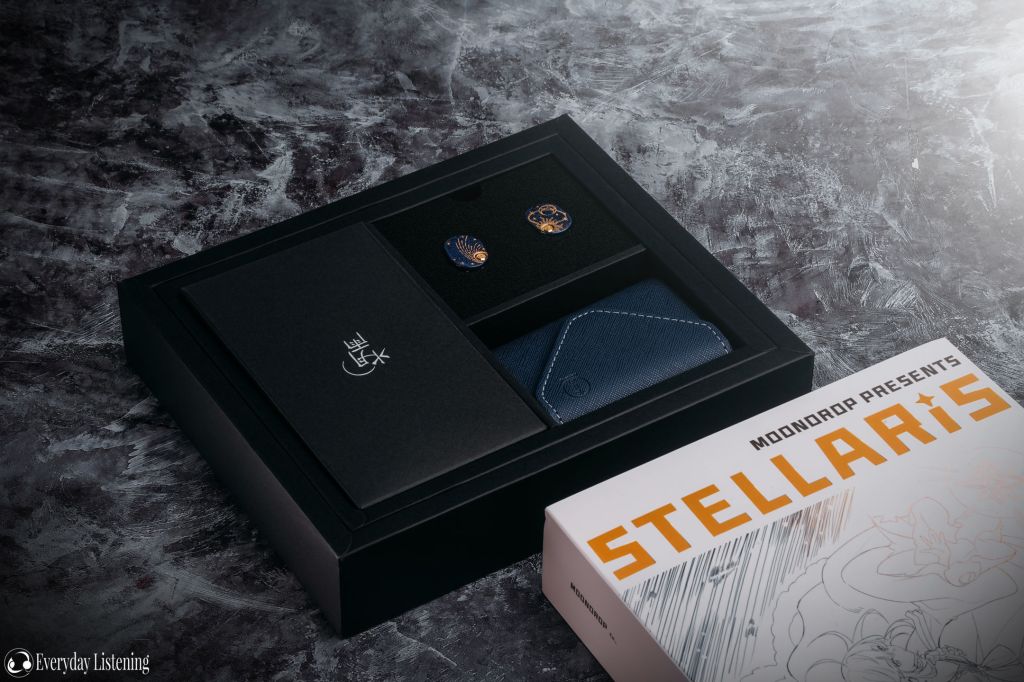
Moondrop provides a good impression with the unboxing experience despite the modest asking price. The box is large with clean print on the outer cover. Removing this reveals a nice display with the earpieces within a foam inlet, a carrying case below and other accessories to the side. The case is a pleasing design with blue faux leather and a magnetic lid, it is similar in design to that included with many other ChiFi earphones.
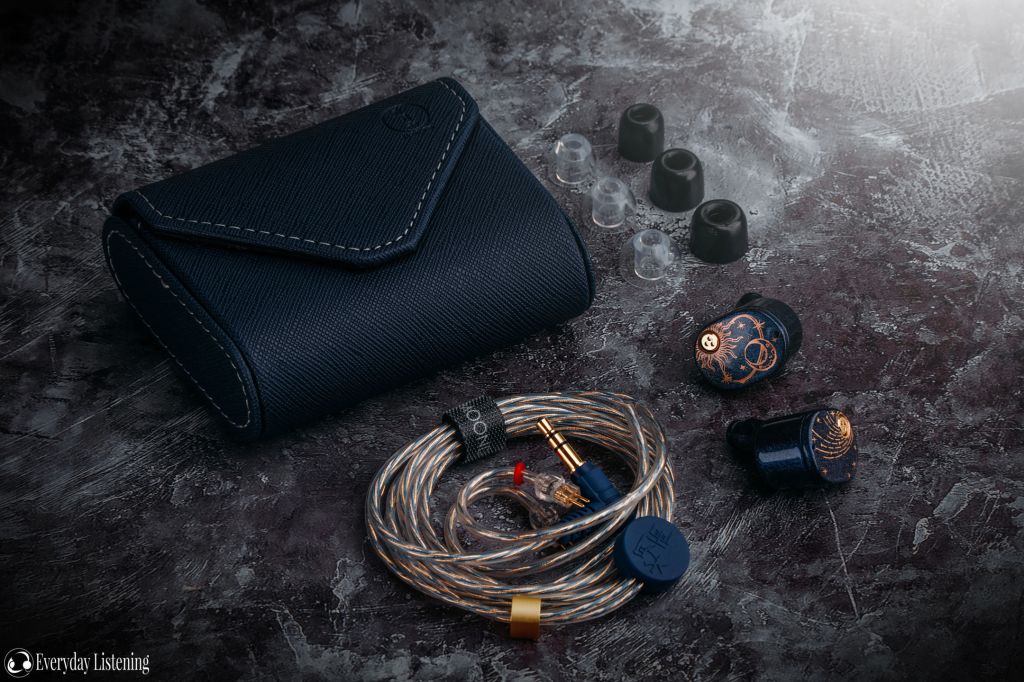
To the left is the cable alongside 3 pairs of ear tips. There are 3 foam tips in addition to 3 silicone tips with a transparent jacket and grippy texture very similar to Xelastec tips. The cable has a clear jacket and the internal conductors match the shells and gold stellaris artwork and text, a nice touch. Overall, not an extensive selection of accessories but good quality components and the basics to get you started.
Design –
The Stellaris makes a good initial impression with well-weighted all-metal housings and a 2-piece shell design with tight tolerances devoid of rough edges or imperfections. What really sets the Stellaris apart, however, is the paint job. Had it not been specified in their marketing material I would never have guessed that the gold patterns were applied by hand given their immaculate outlines. The deep blue with glitter speck base coat serves as an appropriate and equally eye-catching canvas. Besides this, I appreciate the overall colour coordination at play. The faceplate vents are a matching gold and as aforementioned, so too are the conductors in the cables. This makes for an altogether handsome and unique offering, especially within its price class.
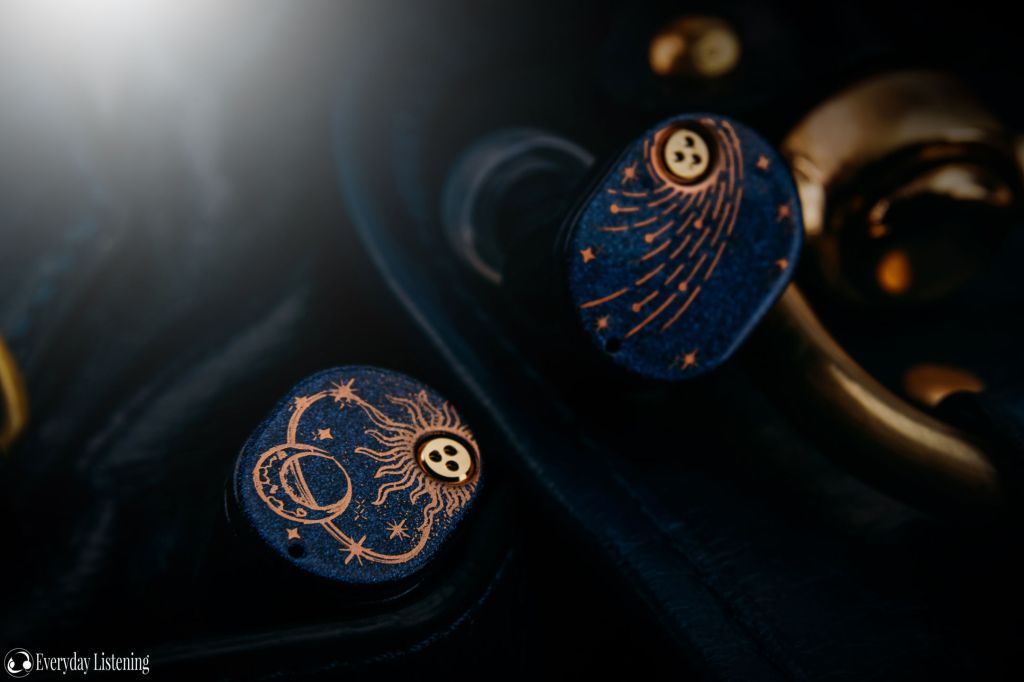
The cable is a fairly standard unit despite the pizazz imbued into the shells. They are removable using standard 0.78mm connectors and this means aftermarket upgrades and alternatives are abundant. The stock cable has a flexible transparent shell and is easy to live with. The Moondrop Y-splitter and gold aluminium chin slider aesthetically elevate the package above the norm. The actual wires are quite thin and feel dainty relative to many competitors, that said. Otherwise, I have no complaints with the ergonomics as the cable is light and the pre-moulded earguides are well shaped. They help to support the larger housings without placing too much pressure on the outer ear.
Fit & Comfort –
Despite the shells having well above average dimensions, they have been designed to sit mostly outside the ear, thereby offering a comfortable wearing experience. The inner portion is small, rounded and elongated while the bulky outer shell is designed to sit outside of the ear, reducing the chance of hotspot formation over extended listening. This does mean that the earphones protrude noticeably from the ear and will be extra dependent on getting a perfect seal to achieve a stable fit. The grippy included silicone tips were a sensible addition in this context and I experienced no issues during regular use.
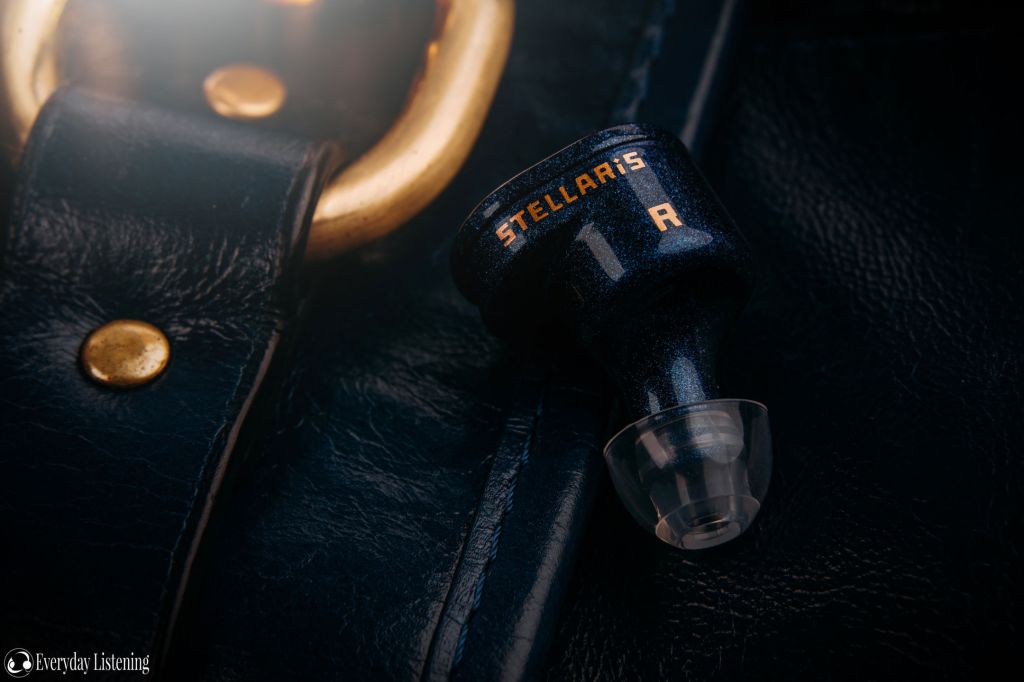
Accordingly, the earphones aren’t well suited for active use and are more susceptible to wind noise when worn during commute. I found them to be relatively stable but again, far from the most locked-in relative to smaller, lower profile in-ears like the Shuoer S12. Isolation is just average due to the vented housings. In return, there is essentially zero wearing pressure despite the seal with the U.C. ear tips being excellent; the design simply attenuates less sound than a fully sealed in-ear. They will be adequate for daily use and commute; some may also enjoy the added situational awareness but those wanting maximum isolation for travel will want to look elsewhere.
